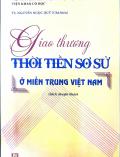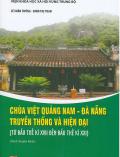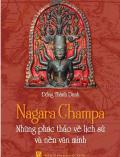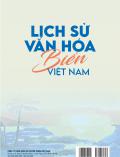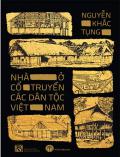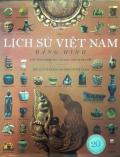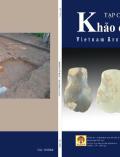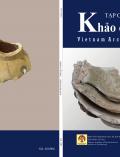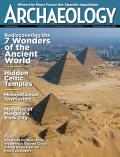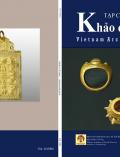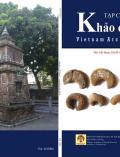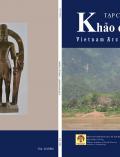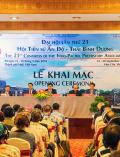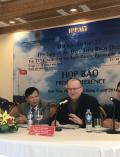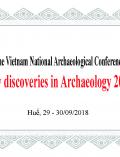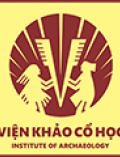Same same but different – contacts between distant worlds
From our hominin ancestors in the Palaeolithic world until the end of the ancient era there seem to have been closer contacts between Europe, Eurasia and Southeast/East Asia which might have been forgotten due to sheer time or diverse historical events like the formation of states. The archaeological evidence invites us to take a closer look at the similarities and to investigate the different cultural contexts. From sharing same ideas and concepts to influences by trade this panel tries to highlight the cultural markers to provide a more integrated view.
Function follows Form? – On the resemblance of prehistoric artefacts (Birte Meller, Hamburg)
Contact and communication between forager communities in the Pleistocene world and the beginning of the Holocene seem to be broader than in later times. This seems to be supported by the archaeological record, for example within the toolkits – which might just be due to the resources or the spread of pottery, which is similar in form and decoration. But some innovations take a different route than the transition to agriculture or ideas of antiquity. This paper will look at the connections in prehistoric times and tries to describe the ways of interaction often overlooked by historiography.
Birte Meller is a prehistoric archaeologist at the University of Hamburg. As the research associate for pre- and early history at the Institute of Prehistoric and Early Archaeology her main focus is on the conception of the Paleolithic world and the transition from foragers to famers.
From Athens to Angkor and back (Jacobus Bracker, Hamburg/Freiburg)
Comparing large and architectural sculpture from ancient Greece and Cambodia seems to be an odd task at first. However, when taking a closer look at stylistic elements or narrative structures astonishing similarities are revealed. Fascinating examples for such comparisons are the styles of sculpture from Phnom Da (6th century CE) and the Aphaia temple on Aegina (6th century BCE) or the narrative structures of mythological reliefs from Banteay Chhmar or Angkor and classical Greece. Of course, no simple explanation is at hand considering the vast distances in time and space between these cultures. However, the paper will investigate how methods of comparative archaeology can contribute to the understanding of the similar phenomena in different cultures and indicate pathways for migrating images.
Jacobus Bracker is a classical archaeologist at the Archaeological Institute at the University of Hamburg and pursuing his PhD-project “Narratology for ancient images”. He is also co-editor of the online-journal VISUAL PAST, co-organiser of interdisciplinary conferences on visual culture, and currently a guest lecturer on “Visual Culture and Anthropology in Archaeology” at the University of Freiburg.
Economic & cultural trade between South Asia and the Mediterranean in the first Centuries BCE (Lilian Schönheit, Hamburg)
While the history of economy and culture of both regions – South Asia and the ancient Mediterranean – are well studied, the connections between them are barely recognized. Already in the first years BCE trading connections from Greece and Rome to India and Sri Lanka were well established. These contacts grew during the following centuries and provoked not only an economic, but also a cultural exchange from one end of the known world to the other. This effect is reflected in archeological remains from western China via the Thai-Malay-Peninsula and India to Egypt and Rome and will be discussed in the paper.
Lilian Schönheit is a classical archeologist at the Hamburg University. She finished her PhD on cultural contacts in South Italy in 2017. Her current research field is focused on cross-regional contacts in antiquity.
Function follows Form? – On the resemblance of prehistoric artefacts (Birte Meller, Hamburg)
Contact and communication between forager communities in the Pleistocene world and the beginning of the Holocene seem to be broader than in later times. This seems to be supported by the archaeological record, for example within the toolkits – which might just be due to the resources or the spread of pottery, which is similar in form and decoration. But some innovations take a different route than the transition to agriculture or ideas of antiquity. This paper will look at the connections in prehistoric times and tries to describe the ways of interaction often overlooked by historiography.
Birte Meller is a prehistoric archaeologist at the University of Hamburg. As the research associate for pre- and early history at the Institute of Prehistoric and Early Archaeology her main focus is on the conception of the Paleolithic world and the transition from foragers to famers.
From Athens to Angkor and back (Jacobus Bracker, Hamburg/Freiburg)
Comparing large and architectural sculpture from ancient Greece and Cambodia seems to be an odd task at first. However, when taking a closer look at stylistic elements or narrative structures astonishing similarities are revealed. Fascinating examples for such comparisons are the styles of sculpture from Phnom Da (6th century CE) and the Aphaia temple on Aegina (6th century BCE) or the narrative structures of mythological reliefs from Banteay Chhmar or Angkor and classical Greece. Of course, no simple explanation is at hand considering the vast distances in time and space between these cultures. However, the paper will investigate how methods of comparative archaeology can contribute to the understanding of the similar phenomena in different cultures and indicate pathways for migrating images.
Jacobus Bracker is a classical archaeologist at the Archaeological Institute at the University of Hamburg and pursuing his PhD-project “Narratology for ancient images”. He is also co-editor of the online-journal VISUAL PAST, co-organiser of interdisciplinary conferences on visual culture, and currently a guest lecturer on “Visual Culture and Anthropology in Archaeology” at the University of Freiburg.
Economic & cultural trade between South Asia and the Mediterranean in the first Centuries BCE (Lilian Schönheit, Hamburg)
While the history of economy and culture of both regions – South Asia and the ancient Mediterranean – are well studied, the connections between them are barely recognized. Already in the first years BCE trading connections from Greece and Rome to India and Sri Lanka were well established. These contacts grew during the following centuries and provoked not only an economic, but also a cultural exchange from one end of the known world to the other. This effect is reflected in archeological remains from western China via the Thai-Malay-Peninsula and India to Egypt and Rome and will be discussed in the paper.
Lilian Schönheit is a classical archeologist at the Hamburg University. She finished her PhD on cultural contacts in South Italy in 2017. Her current research field is focused on cross-regional contacts in antiquity.
Thông báo
Thứ năm, 11 Tháng 12 2025- 17:31
Thứ hai, 29 Tháng 9 2025- 18:20
Thư viện
- Tác giả: Trung tâm Nghiên cứu Kinh Thành, Viện Khảo cổ học
- Nxb: Khoa học xã hội - 2025
- Số trang: 592tr
- Khổ sách: 24x29 cm
- Hình thức bìa...
- Tác giả: Trung tâm Nghiên cứu Kinh Thành, Viện Khảo cổ học
- Nxb: Khoa học xã hội - 2025
- Số trang: 255tr
- Khổ sách: 24x 29cm
- Hình thức bìa...
- Tác giả: TS. Nguyễn Ngọc Quý (chủ biên)
- Nxb: Khoa học xã hội - 2025
- Số trang: 288tr
- Khổ sách: 24cm
- Hình thức bìa: mềm
- Tác giả: Lê Xuân Thông - Đinh Thị Toan
- Nxb: Khoa khoa học xã hội - 2024
- Số trang: 394tr
- Khổ sách: 16 x 24cm
- Tác giả: Đổng Thành Danh
- Nxb: Khoa học xã hội - 2023
- Số trang: 248tr
- Khổ sách: 16 x 24cm
- Tác giả: Louis Malleret
- Nxb: Tổng hợp TP.Hồ Chí Minh - 2023
- Số trang: 567tr
- Khổ sách: 16 x 24cm
- Tác giả: Nguyễn Chí Bền
- Nxb: Khoa khoa học xã hội - 2024
- Số trang: 417tr
- Khổ sách: 16 x 24cm
- Tác giả: Nguyễn Khắc Tụng
- Nxb: Khoa học xã hội - 2023
- Số trang: 695tr
- Khổ sách: 16 x 24cm
- Tác giả: Đông A
- Nxb: Đại học sư phạm-
- Số trang: 660tr
- Khổ sách: 25x30cm
- Hình thức bìa: cứng
Tạp chí
Dày 100 trang, khổ 19x27cm
Dày 100 trang, khổ 19x27cm
Dày 100 trang, khổ 19x27cm
Dày 100 trang, khổ 19x27cm
November/December 2025 - Archaeology Magazine
Dày 100 trang, khổ 19x27cm
Dày 100 trang, khổ 19x27cm
Dày 100 trang, khổ 19x27cm
Dày 100 trang, khổ 19x27cm
Tin tức khác
24 Th9 2018 06:12
22 Th9 2018 11:09
28 Th8 2018 15:04
15 Th8 2018 13:10
25 Th7 2018 04:21
25 Th7 2018 04:19
Copyright © 2016 by khaocohoc.gov.vn.
Thiết kế bởi VINNO
Tổng số lượt truy cập: 10382346
Số người đang online: 16



